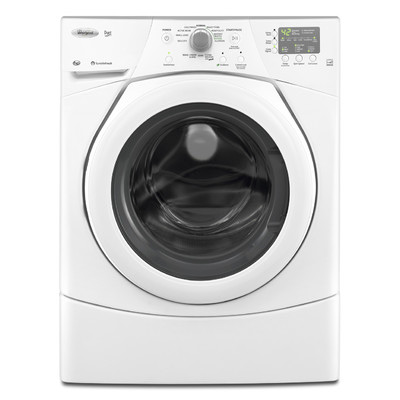Your clothes appearance and lifetime are affected by your dryer. Since you have invested in your wardrobe, you should also think carefully before deciding which dryer to purchase. Consider how often you will use the dryer and what kinds of laundry you do while making your purchase.

All dryers spin clothes around and blow hot air on them. The details are what make the difference in between models.
Energy Source
Check to see what type of dryer hookup is available at your location. This normally dictates whether you will consider purchasing a gas or an electric dryer. Gas dryers usually cost more initially but they tend to be more energy efficient.
Capacity
Manufacturers define capacity differently so a “Super Plus” capacity dryer might not be the same as another. When selecting your dryer, compare capacity using the cubic foot measurement. If you have a limited space, stackable washer-dryer units are available. The general rule about dryer capacity is to have twice as much capacity in the dryer than in the washer. That’s because your clothes will need room to flop around in the dryer. When in doubt, head toward the larger side when choosing a dryer. The extra capacity will allow the clothes to dry more quickly which will save money on your electricity bill.
Features
Dryers offer lots of desirable features. Here are some you should consider when selecting the best one for your needs.
- Moisture sensors: Advanced models automatically sense and adjust moisture and temperature levels for great drying results. Reduces the possibility of over-drying and shrinking while reducing energy use.
- Heat settings: Temperatures are matched to fabric type for better fabric care.
- Stainless-steel drums: are found on advanced models as they do not hold odors, stain or rust and typically last a lifetime.
- A cool-down cycle: will keep the drum spinning for a certain amount of time after the clothes are dry in order to prevent wrinkling.
- Electronic control panel: allows you to easily program and select drying options.
- Child lockout feature for safety.
- Dryer cycles: Most machines offer basic cycles depending on the types of clothing you are drying. Advanced machines will offer more preset cycles to handle just about any type of special fabric.
- Dryer rack: Some models offer a drying rack for special clothing like sweaters, sneakers or pillows. The rack allows you to dry without tumbling the items.
- Lint filter: Higher-end models have sensors that warn you when the lint filter is blocked. Whichever model you choose, make sure to vent the dryer properly and clean out the link filter regularly to avoid a risk of fire.
- Dryer noise reduction: Manufacturers use insulation and other noise reducing technologies to make their dryers run more quietly. This is an important feature to look for if your dryer is located close to frequently used living areas.
Measuring to Fit
Measure the space that you have available for your new dryer. Make sure you know the height, width and depth of the area you want the new model to fit into. If you are also purchasing a washing machine, factor that space into your measurements. An electrical dryer will require a 240-volt outlet and a gas dryer requires a gas line hookup.
